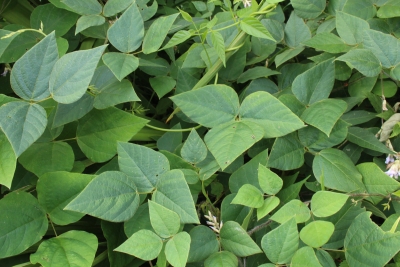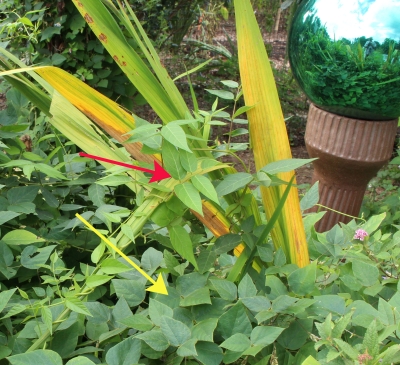HINTS OF SPRING, REMEMBRANCE OF SUMMER
Greenery, For Humans And Ducks
Spring has come early, as usual, in my greenhouse. Growth is shifting into high gear as brighter sunlight fuels more photosynthesis and warms the greenhouse more and for a longer time each day. Giant mustard plants, which provided greens all winter, are no longer tasty now that they have shifted their energy to stalks topped with yellow flowers. No matter. I’m digging the plants out and sowing lettuce seeds.
Paths in the greenhouse are carpeted in green — mostly from weeds, mostly chickweed, which is also soaking up the sun’s goodness. No matter. I’m also digging these plants out before they go to seed and threaten takeover of the greenhouse.
To take over the greenhouse, the chickweed would have to do battle with claytonia, which already has self-sown to bogart much of the greenhouse floor. Fortunately, the claytonia is good fresh in salads.
Chickweed is also good — to some people — for eating. But not for me. My ducks, however, love the stuff. So it’s a win-win situation. I weed the greenhouse paths, gather together a pile of chickweed, then throw it to the ducks as I walk past them on my way back to the house. They rush over to reach it soon after it hits the ground, gobbling it up at a frantic (for a human) pace. Good thing they don’t have to chew.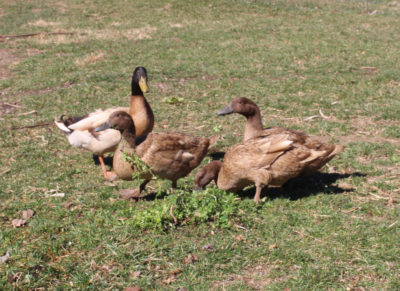
The ducks also enjoy the flowering mustard plants which, along with the chickweed, transmute into delicious duck eggs.
Bottled Summer Goodness
A couple of weeks ago I finished off the last of the elderberry fruit syrup I made this past fall. No fruit could be easier to grow than elderberry. In just a couple of years, the bushes have grown to enormous size, their clusters of creamy white flowers bowing to the ground at the ends of stems late each spring. Later in summer, those flower clusters morph into blue-black fruits, which, admittedly, aren’t very flavorful plain (and shouldn’t be eaten raw).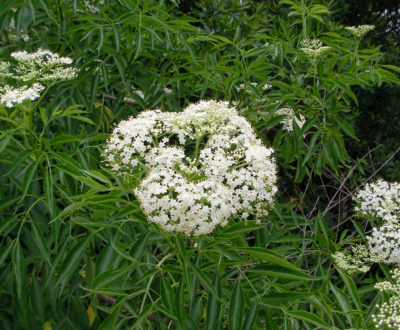
The only care I’m planning for my plants is to prune them every year or so. Pruning will entail cutting some of the older stems to the ground to make way for younger, more fruitful stems, as well as shortening any branches that arch down so much that their fruit would rest on the ground.
In summer, I stripped the ripe fruits from their clusters into a half-bushel basket, and, postponing what to do with them, froze them. Come fall, I cooked them in a little water, added some maple syrup, crushed them with a potato masher, and then jarred them up.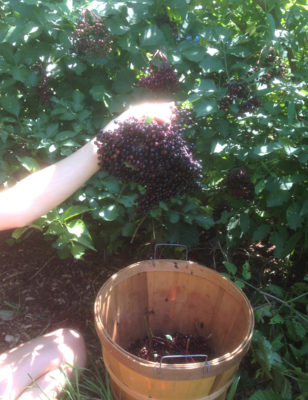
Why all this trouble for a fruit that’s not very flavorful? Because the berries are so healthful! Studies have shown them, or their extracts, to be “supportive agents against the common cold and influenza.” Other benefits have also been ascribed to use of elderberry, but common cold and influenza are enough for me.
Now that I’m out of elderberry syrup, I already feel a slight cold coming on.
Timing Is Important
Back to the greenhouse . . . and sowing seeds of the cabbage family (Brassicaceae), also called crucifers. Which gets me thinking back to last fall when a friend was bemoaning the lack of fat sprouts and the puny growth of his brussels sprouts plants. I asked when he sowed the seeds. “Back in early August,” I think he said. At any rate, back in summer.
It’s no wonder he wasn’t going to be harvesting brussels sprouts. The plants need a long season to mature, from 90 to 120 days, depending on the variety. For best yields, this means sowing seeds now, growing them as transplants for about 6 weeks, and then planting them out for harvest that will begin in late summer. At the very least, the seeds could be planted directly in the ground in a few weeks.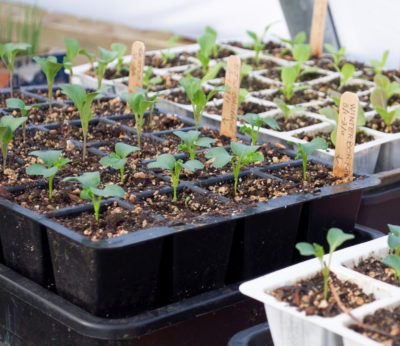
I’m sowing other crucifers now, not because they need such an inordinately long growing season, but so that they can be harvested in late spring and early summer. First harvests will be of miniature bok choys, and then cabbages and, if I grew them (I don’t), broccoli and cauliflower. Kale is the most versatile member of the family — and the one I grow in greatest quantity — amenable to sowing anytime from now until later in summer for harvest in late spring, through summer, and on into fall and winter.
Mustard, turnips, and arugula are also crucifers, the whole family most easily identified by their four-petaled blossoms in the shape of a cross, the root of the word crucifer.

